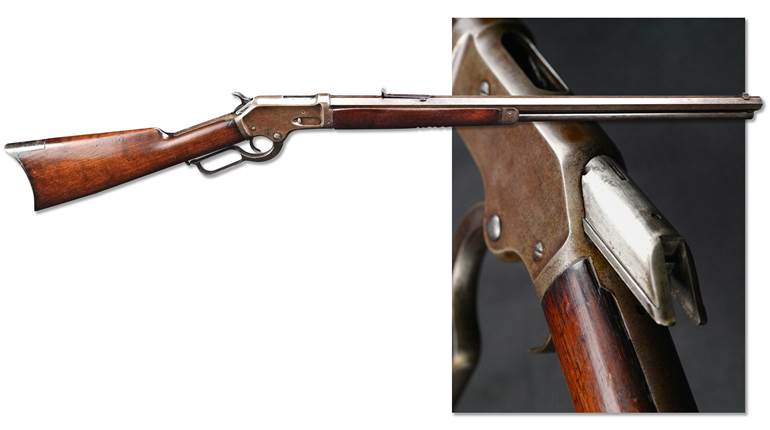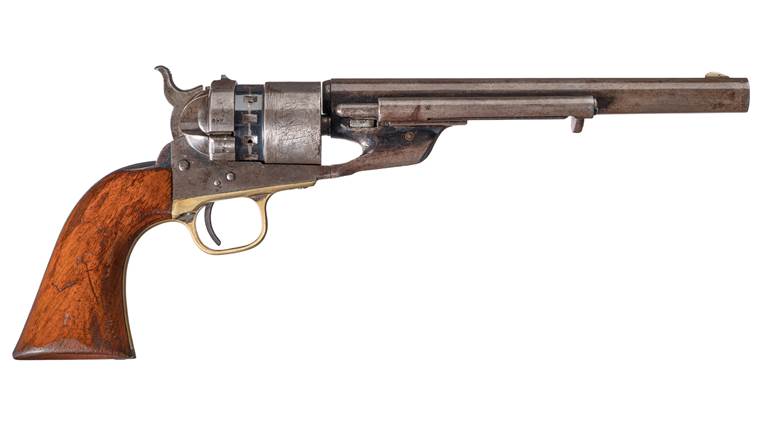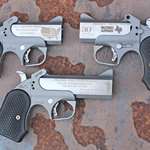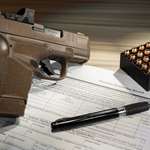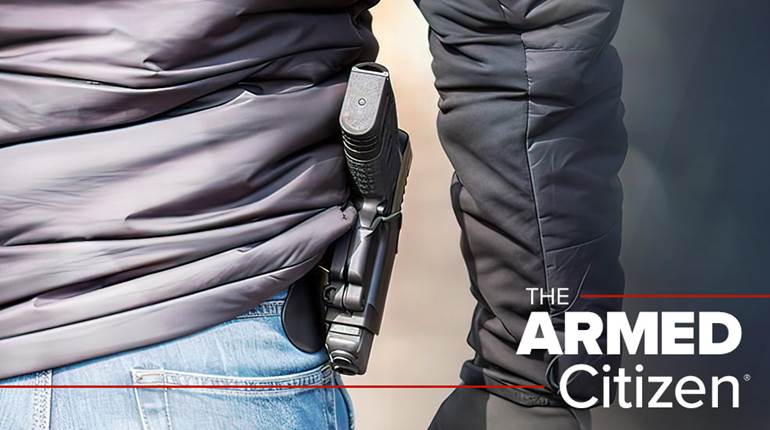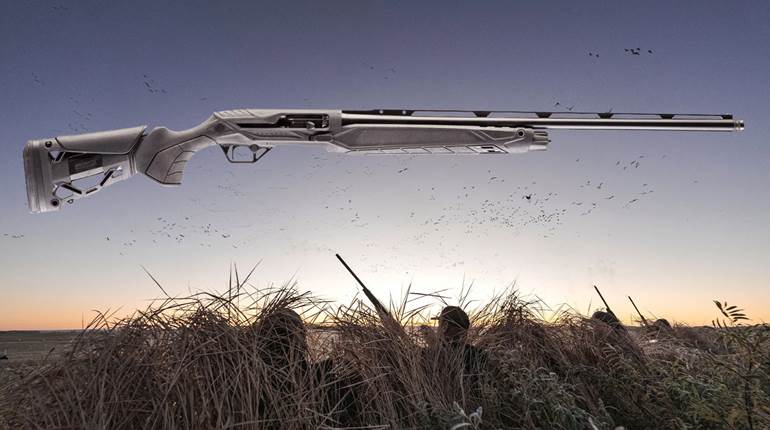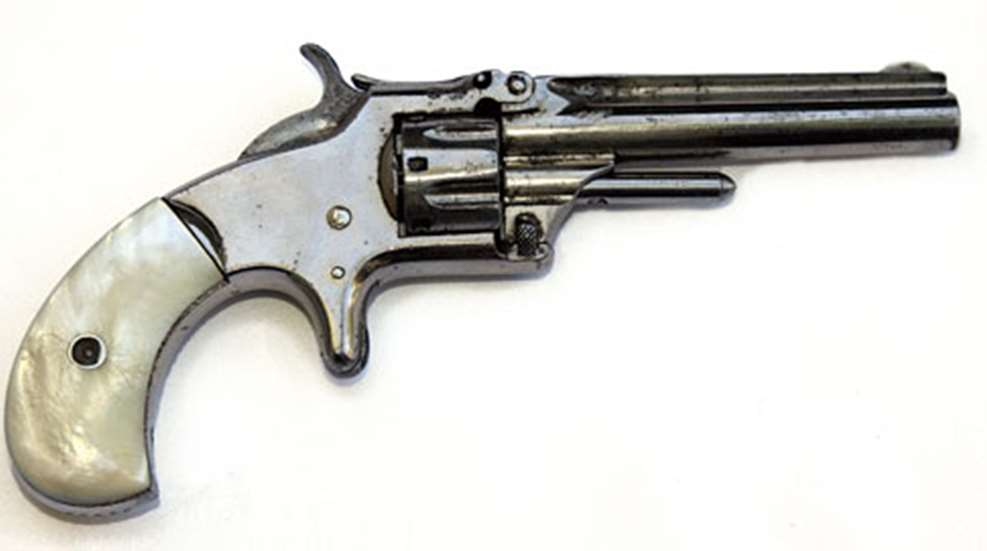
Today’s penchant for diminutive personal-protection pistols is hardly new. Back in 1856, Horace Smith and Daniel B. Wesson formed their now-famous company to manufacture a palm-size revolver for a .22 rimfire cartridge Wesson had developed. With a 29-grain bullet backed by 4 grains of blackpowder, it became the .22 Short.
The timing was perfect. Samuel Colt’s revolving cylinder patent had just expired, and Wesson subsequently secured a licensing agreement with former Colt employee Rollin White, who held the patent for a bored-through cylinder, thereby permitting a metallic cartridge to be inserted into the breech. Thus, the world’s first .22 rimfire, the Smith & Wesson Seven Shooter (also known as the Model No. 1) premiered in 1857. The company literally hinged its success on the gun, as its tip-up barrel unlocked and pivoted on the frame, enabling the cylinder to be withdrawn for loading and unloading. A fixed rod underneath the barrel was used to eject empties.
In 1860, with 11,671 revolvers made, S&W introduced a second version. The Model No. 1 Second Issue continued with the First Issue’s serial numbers, and it ended around number 115,400 in 1868. Both versions of the seven-shot single-action featured a silver-plated brass frame, a blued octagon 33⁄16-inch barrel, an unfluted cylinder and a square butt. Options included full nickel plating and pearl, ivory, or walnut grips instead of rosewood.
After the Civil War, S&W cosmetically updated the No. 1 and renamed it “The New Model 1,” with its own serial number range. Collectors refer to it as the Model No. 1, Third Issue. Mechanically identical to the Second Issue, it featured a cast iron frame, a fluted cylinder, a round barrel and a bird’s head grip. It was also offered with a rare 211⁄16-inch barrel. A blued finish was added, and Third Issues were occasionally gold- or silver-plated and engraved. It was discontinued in 1882, with 131,163 guns produced.
The No. 1 Third Issue shown here, with a 33⁄16-inch barrel, retains 85 percent of its original nickel finish and its factory pearl stocks. Unfortunately, there is a small chip on the left stock, and the cylinder stop spring is missing, so when the gun is cocked the cylinder rotates into position but does not lock up. Thus, its condition drops from NRA Excellent to NRA Fine, with a value of $600 to $650. Still, it is representative of a revolver that introduced the .22 rimfire to shooters and started the S&W legacy.
Gun: Smith & Wesson Model No. 1, Third Issue
Caliber: .22 Short (blackpowder)
Serial No.: 98892
Condition: 90 percent—NRA Fine (Antique Gun Condition Standards)
Manufactured: 1868 to 1882 (there are no factory records for this model)
Value: $600 to $650













